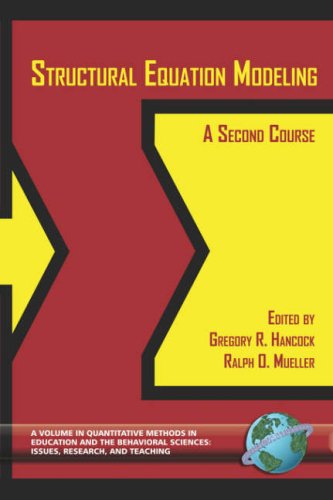

Most ebook files are in PDF format, so you can easily read them using various software such as Foxit Reader or directly on the Google Chrome browser.
Some ebook files are released by publishers in other formats such as .awz, .mobi, .epub, .fb2, etc. You may need to install specific software to read these formats on mobile/PC, such as Calibre.
Please read the tutorial at this link: https://ebookbell.com/faq
We offer FREE conversion to the popular formats you request; however, this may take some time. Therefore, right after payment, please email us, and we will try to provide the service as quickly as possible.
For some exceptional file formats or broken links (if any), please refrain from opening any disputes. Instead, email us first, and we will try to assist within a maximum of 6 hours.
EbookBell Team

4.7
26 reviews(sponsored by the American Educational Research Association’s Special Interest Group: Educational Statisticians)
Series Editor Ronald C. Serlin, University of Wisconsin-Madison
This volume is intended to serve as a didactically-oriented resource covering a broad range of advanced topics often not discussed in introductory courses on structural equation modeling (SEM). Such topics are important in furthering the understanding of foundations and assumptions underlying SEM as well as in exploring SEM as a potential tool to address new types of research questions that might not have arisen during a first course. Chapters focus on the clear explanation and application of topics, rather than on analytical derivations, and contain syntax and partial output files from popular SEM software.
CONTENTS: Introduction to Series, Ronald C. Serlin. Preface, Richard G. Lomax. Dedication. Acknowledgements. Introduction, Gregory R. Hancock & Ralph O. Mueller. Part I: Foundations. The Problem of Equivalent Structural Models, Scott L. Hershberger. Formative Measurement and Feedback Loops, Rex B. Kline. Power Analysis in Covariance Structure Modeling, Gregory R. Hancock. Part II: Extensions. Evaluating Between-Group Differences in Latent Variable Means, Marilyn S. Thompson & Samuel B. Green. Using Latent Growth Models to Evaluate Longitudinal Change, Gregory R. Hancock & Frank R. Lawrence. Mean and Covariance Structure Mixture Models, Phill Gagné. Structural Equation Models of Latent Interaction and Quadratic Effects, Herbert W. Marsh, Zhonglin Wen, & Kit-Tai Hau. Part III: Assumptions. Nonnormal and Categorical Data in Structural Equation Modeling, Sara J. Finney & Christine DiStefano. Analyzing Structural Equation Models with Missing Data, Craig K. Enders. Using Multilevel Structural Equation Modeling Techniques with Complex Sample Data, Laura M. Stapleton. The Use of Monte Carlo Studies in Structural Equation Modeling Research, Deborah L. Bandalos. About the Authors.